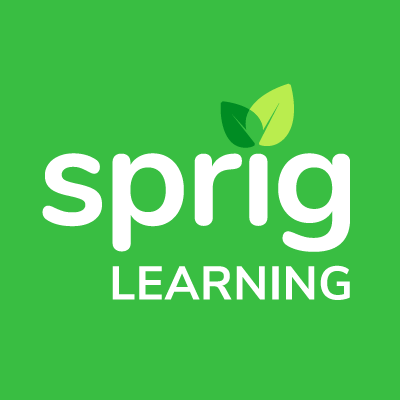In a recent article, Sprig brings attention to crucial aspects of early literacy leadership with “11 Common Situations in Early Literacy and How to Respond”.
It’s a must-read, if you haven’t done so already. Going beyond case studies and researched best practices, Sprig revisits previous blogs, extracting valuable insights that can pose challenging situations to early literacy leaders and presents their corresponding responses.
As discussed, those initial 11 scenarios were not exhaustive by any means, and so Sprig expands the discourse in this article by introducing three additional common situations faced by early literacy leadership.
Each situation is followed by an appropriate response.
This approach taps into the wealth of experiences encountered by early literacy leaders, providing actionable learnings.
Situation 1. Needing Interventions Becoming the Norm.

Amid the aftermath of the pandemic, numerous students grapple with significant setbacks, extending beyond their initial challenges. A concerning trend emerges—a flipped three-tier pyramid, wherein more students now require special assistance than those who do not.
In classrooms facing this scenario, it becomes crucial to implement targeted actions that address the increased demand for support without overwhelming resources typically designated for tier 3 students. Balancing intervention strategies becomes paramount to ensure equitable and effective assistance for all students navigating the complexities of post-pandemic learning.
How to Respond:
The optimal approach involves integrating these interventions seamlessly into tier 1 and tier 2 instruction, as much as possible, both in core classroom teaching and small-group differentiated instruction.
The issue at hand underscores the efficiency and cost-effectiveness of intervention strategies embedded within regular classroom practices, as opposed to relying on intensive programs that cater to too few students and often come into play when it may be too late for effective assistance.
Situations 1 taken from:
The Science of Teaching Reading: Effective Reading Assessment, Explicit Reading Instruction and Targeted Reading Intervention.
Situation 2. Lack of Access to Early Childhood Education Centers and Programs.

The scarcity of accessible early childhood education centers and programs poses a significant challenge for school leadership dedicated to fostering high-quality early learning. Recognizing the pivotal connection between preschool attendance and kindergarten readiness, institutions face the ongoing challenge of addressing this gap through independent initiatives or collaborative partnerships.
How to Respond:
When faced with a lack of access to early education centers and programs, there are several strategies that early literacy leaders can consider:
Community Collaboration: Encourage collaboration between educational institutions and community organizations to establish state-of-the-art childcare centers, similar to the initiative taken by Reading Area Community College in Pennsylvania. These centers not only provide early childhood education but also serve as valuable training grounds for educators.
Nonprofit Initiatives: Nonprofit organizations, such as the Catherine Hershey Schools for Early Learning, can play a pivotal role by launching early learning centers focused on providing free high-quality education to children from low-income families. This model demonstrates the potential for philanthropic efforts to address educational gaps.
Transitional Kindergarten (TK) Expansion: Following the example of Oakland Unified School District, districts can anticipate enrollment increases and take proactive measures by expanding transitional kindergarten facilities. By adopting a TK curriculum and making it universal, as planned in California, districts can accommodate more students.
Repurposing Educational Facilities: In instances where new elementary schools are built or existing ones are renovated, like the case of Fordham Early Learning Academy in Ocala, Florida, consider dedicating space for early learning programs. This proactive approach supports early literacy goals and provides a solid foundation for young learners.
Situation 2 taken from:
5 Emerging Themes in Improving Early Literacy
Situation 3: Pressure of Mandatory Curricular Reforms

Schools often encounter pressure or mandates to undergo curricular reforms, demanding thoughtful strategies for seamless implementation. This involves prioritizing professional development, integrating lessons seamlessly, ensuring accurate assessments, and adeptly adapting to new curricular frameworks.
Delving into the measures adopted by schools and districts, this section explores the challenges inherent in curriculum updates and the strategies employed to meet these demands effectively.
How to Respond:
Effectively navigating the challenges of curriculum reforms demands a multifaceted strategy, as illustrated by successful initiatives in various schools and districts:
Professional Development Focus: Wolf Creek Public Schools in Ponoka allocates three full days of professional development for elementary teachers, ensuring thorough preparation for the impending curriculum changes.
Curriculum Consultants Support: Edmonton Catholic Schools increase the number of curriculum consultants, providing crucial assistance to teachers and emphasizing the value of additional support structures.
Teacher Collaboration Emphasis: Black Gold School Division in Leduc underscores the significance of teacher collaboration as a preparation strategy, recognizing the power of collective efforts in adapting to curriculum changes.
Strategic Investment in Education: The Ministry of Education in Ontario invests $109 million, introducing new screening requirements, standardized tools, additional specialist teachers, and a language curriculum overhaul to enhance young students’ reading skills.
Phonics-Centric Approach: Fort Worth Independent School District shifts its focus to a curriculum emphasizing phonics, supplementing it with professional development to address potential issues stemming from a lack of exposure to grade-level texts.
Situation 3 taken from:
5 More Emerging Themes for Success in Early Literacy
What About Hidden Challenges?

In the dynamic landscape of early literacy leadership, schools may encounter unforeseen challenges that could impact student performance and hinder the realization of their full early literacy potential.
Identifying and addressing these latent issues is crucial for fostering a robust learning environment. Conducting a thorough audit of current practices in core instruction, assessment, and differentiated instruction becomes imperative to unveil hidden obstacles.
For actionable steps on uncovering and surmounting these challenges, Sprig’s blogs offer valuable insights. A particularly relevant resource is the article titled “Navigating Back-to-School Challenges: Improving Reading Strategies for School Leaders,” where detailed strategies empower leaders to enhance their reading programs and proactively address potential hurdles.
By staying informed and proactive, schools can fortify their early literacy initiatives and overcome all challenging situations.

